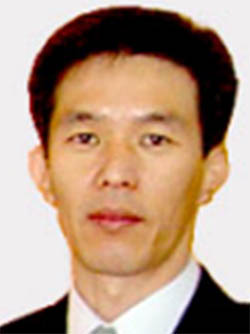KHNP targets long-term operation
In South Korea, the initial operating permits of ten out of the 26 operable nuclear reactors are set to expire by 2029. Korea Hydro & Nuclear Power (KHNP), the owner and operator of those plants, is pursuing continued operation for these ten units. Their total capacity is 8323 MWe, accounting for 32% of South Korea's nuclear power generation capacity of 25,825 MWe.
South Korea conducts comprehensive safety evaluations for long-term operation, including life management assessment of major equipment, radiological environmental impact assessments, and periodic safety assessments, according to International Atomic Energy Agency (IAEA) standards.
The procedure for securing continued operation of a reactor involves KHNP submitting a periodic safety evaluation every 10 years. Separately, KHNP must submit an application to the Nuclear Safety and Security Commission (NSSC) for changes in the operating permit, including a radiological environmental impact assessment, reflecting public opinion. Upon review and approval, continued operation is permitted.
For Kori 2-4, the periodic safety evaluations and applications for operating permit changes have been submitted to the NSSC, and the review process is ongoing.
For Hanbit 1&2 and Hanul 1&2, the periodic safety evaluations have been submitted to the NSSC and are under review while public opinion comments are collected for the radiological environmental impact assessment.
For Wolsung 2-4, the periodic safety evaluations have been submitted to the NSSC and are undergoing compatibility review.
The Korean government has included the continued operation of these ten nuclear reactors in its 10th Basic Plan for Electricity Supply and Demand (2022), to ensure stable power supply and achieve the country’s nationally determined contribution (NDC) for 2030.
Interview: Jung Won-Soo, Vice President / Head of Plant Improvement Department, KHNP

The push for continued operation of ten nuclear reactors seems challenging. What are the key strategies for successfully implementing the project?
The key strategy is prioritizing nuclear safety while aiming for timely restart of the ten refurbished units. We are maximizing the recruitment of experienced personnel for continued operation. We have established dedicated organizations for long-term operation and research, and are promoting close collaboration with domestic specialized companies, like KEPCO E&C.
By integrating domestic and international business experience and operational experience of the same reactor models, as well as utilizing the latest technical standards, we aim to establish an optimal continued operation project schedule that is compact and thorough.
KHNP has already carried out the long-term operation review process for two units. Have lessons learned led to improvements in the ongoing projects?
We have analyzed and incorporated lessons learned from the operational experience and know-how from the refurbishment projects of Kori 1 and Wolsung 1. Notably, by improving the methodology for evaluating operational environments of safety-related cables that have reached the end of their design lifetime, we have significantly reduced project costs and schedule, in addition to increasing reliability of the components compared to previous ‘test and replace’ methods.
Additionally, we developed an environmental fatigue monitoring system to predict and prevent environmental fatigue for key equipment of the reactor coolant system, enhancing the safety and integrity of critical facilities. Furthermore, efforts are being made to maximize actual plant output and optimize capacity factors by identifying optimal areas for facility equipment and proactively replacing components.
What does KHNP aim to achieve through the ongoing long-term operation projects?
As the largest power company in Korea, holding over 30% of the nation's total power generation capacity, KHNP plays a crucial role in ensuring stable energy supply and achieving carbon neutrality. The current long-term operation projects are essential to the government's energy policy.
By smoothly implementing the long-term operation projects for ten nuclear reactors, including both pressurized water reactors (PWRs) and pressurized heavy water reactors (PHWRs), we aim to accumulate engineering experience and capabilities, enhancing our competitiveness and standing as a global energy leader.